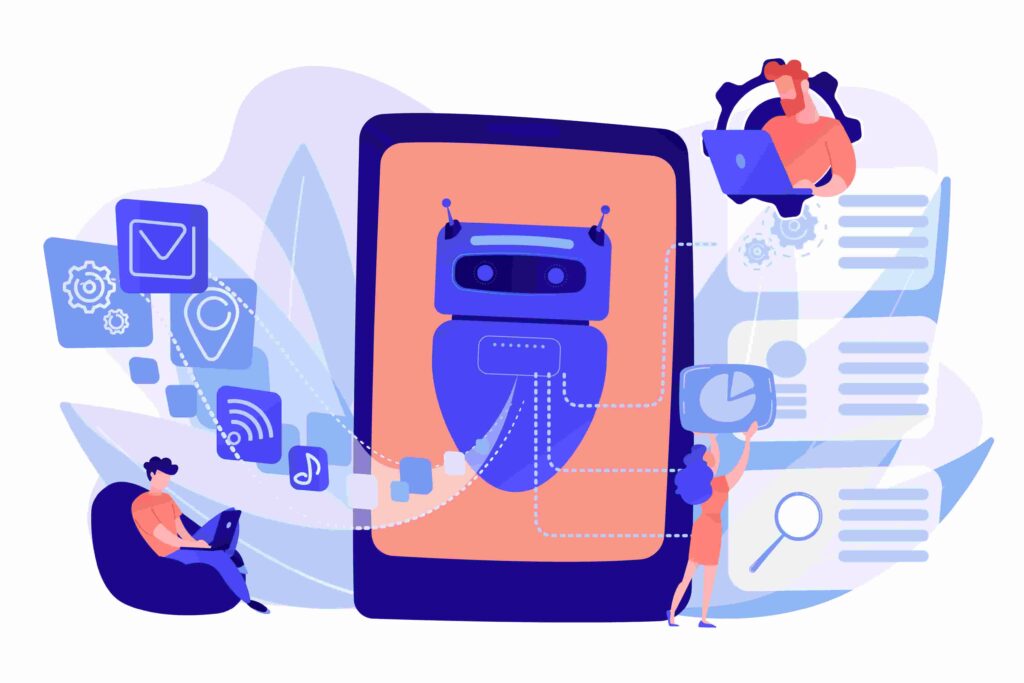An omnichannel solution is a strategy increasingly used by companies to integrate online and offline communication channels and improve customer experience.
It unifies several touchpoints into a single system, centralizing user history.
Therefore, while websites used to be enough to set your company apart from the competition, today it’s necessary to consider an omnichannel strategy for customer service.
What is omnichannel experience?
An omnichannel solution is a multichannel strategy focused on customer experience. It allows customer to be in the physical store, check product availability on the app, complete the purchase digitally, and request product delivery at home, for example – that is, customers can access a company through different channels simultaneosly.
This way, the process is easy to manage, providing a better customer experience and strengthening connections between online and offline worlds.
How does omnichannel customer service work?
Omnichannel customer service goes beyond a company’s presence on different communication channels. Its goal is to ensure synchronized service and discourse at all touchpoints.
It ensures customers won’t notice any difference between online and offline channels. When a company enables a service channel, information is collected and sent to a software solution that centralizes communication and generates a history of customer service.
This way, staff members have access to customer data, including customer requests and pain points. It improves productivity and service quality and provides accurate data, supporting assertive analyses and better decisions.
Benefits of an omnichannel solution
An omnichannel solution offers a number of benefits, including:
- Segmentation of distribution and customer communication channels;
- Definition of rules and standards for service excellence;
- Data and information centralized on a single multichannel platform;
- Monitoring of all touchpoints from one place;
- Detailed reports that allow companies to predict process failures and identify growth opportunities;
- Improvements in customer mapping and behavior at every stage of the sales funnel using detailed reports.
As a result, organizations see an increase in customer loyalty and engagement, as well as reduced customer acquisition cost and higher revenues.
Main omnichannel solutions
An omnichannel solution provides customers with the best service experience before, during, and after product and service acquisition. It also offers more autonomy and freedom of choice.
This is possible thanks to the integrated and personalized interaction between communication channels. The main omnichannel solutions offer services via:
- chatbot;
- WhatsApp;
- social media platforms, such as Instagram;
- email;
- face-to-face customer service (offline support).
Read more: Keys to building a good customer relationship
Omnichannel tools
Omnichannel tools allow an integration of communication channels, so data can be used to optimize the customer experience both during sales and support.
These tools include the following:
-
CRM
CRM (customer relationship management) is a sales tool that stores and synchronizes the stages of sales prospecting, sales funnel, among others. It can also be used in omnichannel customer service to create a history of customer interactions.
This way, a customer image can be built to organize the commercial and service process, not to mention that it helps identify areas of improvement from the first stages of customer relationship with the company.
-
Multiple contact channels
Several omnichannel platforms are available. However, a customer profile should be created before selecting the best communication channels for a company. The next step is to define an omnichannel service on Whatsapp or another channel, ensuring excellence in customer experience.
-
Customer service system
A customer service system allows a company to build a customer history, which will provide conditions for the service and support teams to use all channels from a single system.
By directing all tickets to a single tool, the omnichannel contact center solution increases team productivity.
How to implement an omnichannel solution?
-
Develop a strategy with your team
Gather business departments that are directly linked with sales and customer support actions to create and implement omnichannel solutions.
-
Get to know your customer
Another key aspect is to learn about your customers and their needs, desires, habits, and behaviors. This information will support the development of a strategy for every platform and prepare the team to meet the demands of these consumers.
-
Segment customers
When implementing omnichannel solution, consider customer segmentation. It will help you communicate with every profile appropriately, increasing the chances of conversion. In this process, digital marketing automation tools and standard communication or artificial intelligence tools, such as chatbots, can be used.
-
Monitor constantly
Finally, monitor quality indicators to check whether omnichannel solutions are aligned and meeting consumer demands.
What’s the best way to impact omnichannel consumers?
To impact omnichannel consumers, companies need to ensure a seamless buying journey in both physical and digital environments. Therefore, the following measures should be considered:
-
Optimize service processes
First, understand your consumers, map their buying journey, and centralize data collected from customers and interactions to ensure organized processes and support the creation of actions that exceed customer expectations.
2. Integrate communication channels
Centralization of customer service channels with an omnichannel promotes updated contact information, preventing data loss. This way, agents can speed up resolution of customer requests and provide the best customer experience.
3. Personalize customer service
Personalized customer service with an omnichannel solution ensures a feeling of exclusivity, promoting long-term relationships between the company and the customer and higher consumer satisfaction and loyalty rates.
4. Provide support team training
An important aspect of omnichannel solutions is service team training. After all, the actions of team members have to be aligned with the company’s objectives in order to offer service excellence.
5. Select a good omnichannel platform
Finally, a comprehensive omnichannel solution can significantly impact consumers. The solution must be able to integrate all channels, ensuring continuous service and fast responses.
With information centralized on a single platform, customers don’t have to repeat their data at every contact. It prevents deterioration of customer relationship and promotes alignment of different departments.
Milvus omnichannel platform is an option that can help you achieve excellence in omnichannel customer service. It interconnects the company’s channels and offers support from anywhere.
In addition, it ensures access to other important resources for exceptional service, such as:
- integration with AI to automate some interactions;
- self-service;
- integration of communication channels to provide an omnichannel experience;
- among others.
Conclusion
The best omnichannel system for your business can optimize many processes, improving customer service and enabling centralized and interconnected customer interactions to ensure fast responses and high productivity.
Learn more about Milvus platform and have access to the best resources to optimize team productivity, provide more human and personalized support experiences, and increase customer satisfaction.
Contact our consultants and take a free trial right now.








